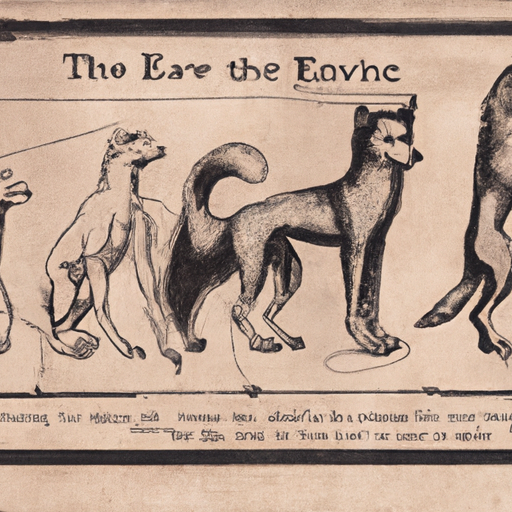Introduction
If you’re a dog lover, chances are you’ve looked at your furry friend and wondered how they came to be. How did such a diverse array of breeds, each with their own unique characteristics and temperaments, come into existence? This article is here to dive deep into that question.
The Origin of Dogs
Dogs, Canis lupus familiaris, share a common ancestry with wolves. Believe it or not, your Chihuahua or poodle has more in common with a wolf than you might think! Scientists estimate that dogs diverged from wolves between 20,000 to 40,000 years ago. Here’s how that timeline might have looked:
- 20,000 – 40,000 years ago: Dogs and wolves share a common ancestor.
- 15,000 years ago: Evidence of domesticated dogs appears in archaeological records.
- From then to now: Selective breeding results in the hundreds of dog breeds we know today.
How Selective Breeding Shaped Dogs
Your job as a caregiver often involves making choices for those in your care. Imagine you’re a human living thousands of years ago, and you notice certain wolves are more friendly or useful than others. You might choose to care for and breed these wolves, right? This is the basic idea behind selective breeding. Over many generations, humans have carefully selected and bred dogs with specific traits. This has resulted in the wide variety of dog breeds we see today.
- Size: From the tiny teacup Chihuahua to the towering Great Dane, size is one of the most varied traits in dog breeds.
- Temperament: Each breed has its own typical temperament, from the energetic Border Collie to the laid-back Basset Hound.
- Appearance: Different breeds can have wildly different appearances, from the curly-haired Poodle to the sleek, short-haired Greyhound.
The Impact of Human Influence
It’s fascinating to consider how much impact humans have had on the evolution of dogs. By acting as caregivers and selectors, we’ve shaped the canine species into a form that fits our needs and desires.
Here’s a simple table to illustrate the impact of human influence on dog evolution:
| Trait | Without Human Influence | With Human Influence |
|---|---|---|
| Size | Limited variation | Wide range from tiny to large |
| Temperament | Mostly wild | Wide range from calm to energetic |
| Appearance | Limited variation | Wide range of colors, fur types, and shapes |
The Future of Dogs
As we continue to breed dogs for specific traits, we’re certain to see even more variety in the future. However, it’s crucial that we do so responsibly. As caregivers, we must ensure that our breeding practices promote the health and well-being of dogs.
FAQ
Q: Were dogs always domesticated animals?
No, dogs were once wild animals and share a common ancestry with wolves.
Q: How did different dog breeds arise?
Different dog breeds arose through the practice of selective breeding, where humans chose to breed dogs with specific traits.
Q: What is the impact of humans on dog evolution?
Humans have had a significant impact on dog evolution, shaping their size, temperament, and appearance through selective breeding.
Q: What is the future of dogs?
As we continue to selectively breed dogs, we’ll likely see more variety. However, it’s important to ensure that breeding practices promote health and well-being.



